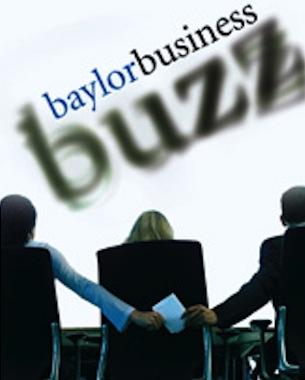by Barbara Elmore
Requests still arrive for Distinguished Professor Earl Grinols to comment on the costs and benefits of casino gambling to legislative bodies and businesses, but the frequency varies.
Some are more colorful than others, such as a recent entreaty from a grass-roots group trying to block an attempt to put a casino near the Civil War battleground in Gettysburg, Pa.
Before the controversy ended in December 2006, the battle pitted citizens against each other in an apparent fight for what Gettysburg would become: The new address of a glittering casino promising lavish construction and more jobs, or a family-friendly village laden with history and tradition.
The events in Gettysburg unfolded in spring 2005 when Crossroads Gaming Resort & Spa proposed a slots-only gambling venue near Gettysburg’s battlefield, amidst a population of less than 10,000 in south-central Pennsylvania. The village is well-known for many reasons; in addition to historical re-enactments of battle and tours of the battle site, Gettysburg beckons visitors with museums, colleges, and diverse local and state culture.
It’s most famous, however, for the July 1-3, 1863, Battle of Gettysburg. Desiring to lure battlefield tourists, the casino proposal included pledges of jobs, hotel rooms, and money for both cash-strapped public services and private citizens, coming in the form of wages and increased business. In short, said the promoters, the new casino would provide economic development.
However, not everyone wanted the development so near the Gettysburg battlefield. “Locals did not like the idea, both for the local aesthetics and because they felt it was disrespectful of the battlefield,” Grinols says. They organized quickly. According to the Web site for the group No Casino Gettysburg (nocasinogettysburg.com), “The opposition to the casino idea began the day Crossroads announced its intentions™The group held public meetings, seminars, and a candlelight vigil™They met with various local officials where the casino proposal was to be discussed, producing voluminous research on economic impact.”
But facing arguments about the economic benefits that the casino promoters offered, opponents knew they needed to do more than argue that a casino wasn’t the right fit for Gettysburg, Grinols says. “They came to me and said, ‘We need to say more than this.'” Working on other projects and strapped for precious time, Grinols directed them to his book.
Gambling in America: Costs and Benefits (Cambridge University Press, 2004), offers analyses that can make a lasting impression on those with a mind for business, says Keith Miller, who used the book to help produce a 139-page cost benefit analysis of the Gettysburg casino proposal. Grinols’ vast research on the economics of casinos is rare, Miller says, which makes it all the more valuable.
A member of the Civil War Preservation Trust who was already working on a Gettysburg project, Miller hadn’t heard of Grinols’ research before he started his unpaid consulting work focused on the Gettysburg casino. He had no trouble finding it. “You know, it doesn’t pay to tilt at windmills,” Miller notes. “There are no books written on ‘How do you make money not getting a casino?’ It’s not like you had to look at 24 different sources to find something. Earl is about it. He has done some very interesting work.”
Grinols’ years of research into the social costs and benefits of casino gambling is strengthened by his economist’s eye. As a senior economist for the Council of Economic Advisers to President Reagan in 1987-88, he tackled casino gambling in the ‘90s by recommending to Congress the formation of a commission to study gambling’s impact.
The National Gambling Impact Study Commission was established in 1996 and issued a report in 1999 recommending a moratorium on certain types of gambling expansion, including casinos. No research completed since then goes against that recommendation.
In part, Grinols’ studies show that the price people pay in the form of bankruptcies, health issues, crime and other costs add up to about $3 for every $1 gained. That kind of economic analysis provided the basis of Miller’s report, and it resonated with business owners, Miller said.
“Earl’s book does a fantastic job of describing how to look at costs and benefits. As his work points out, if all you’re doing is taking 1,000 people making $6 an hour from employer A to employer B and paying them a buck more an hour, the economic benefit is the buck, not the $7 an hour these people are getting paid.”
You have to make the argument frequently, Miller says, and “Eventually the light bulb goes off that growth, per se, is not economic development.” Helping make that argument are vivid examples that Grinols provides. Miller used an illustration of trying to grow a community by installing a dump. “I know there are a lot of jobs in the dump, but do I really want that?” he asks rhetorically. “He (Grinols) was very helpful in laying out this argument, and I applied the arguments to Gettysburg’s economy. The costs exceeded the benefits 6 to 1. So why bother?”
Although Miller had no other ties to Gettysburg other than being involved with the Preservation Trust and volunteering with them at the time the casino battle started, he was glad he was able to use his business experience “to help them understand this as a business as opposed to ‘gambling bad, family good.'” He was surprised, however, at how long the resolution took. He thought the proposal would disappear quickly, but it took 18 months for that to happen – “an educational experience in itself,” he says.
By comparison, time he spent with Grinols went smoothly and quickly. “I went to his book when I was developing the impact report for Adams County. I contacted him and told him I’d read the book.” Miller then requested that Grinols take a look at the final report, which the professor did. “He said, ‘You need to emphasize this or you missed this or I have some new work.’ It was pretty efficient. We chatted once or twice on the phone. It probably took a couple hours of his time. It was very valuable time for me, and he was very generous to contribute it.”
In the end, the Pennsylvania Gaming Control Board rejected a license for the casino in December 2006, based on economic reasons and overwhelming opposition. Those are the reasons Miller focused on.
“Clearly, there will always be a moral dilemma which comes with gambling – that it’s not right to profit by others’ sadness. That’s always an undercurrent,” Miller says. “But if you deal with businesspeople and politicians, it comes down to the positive or negative economic impact that a casino will bring. I focused most of my efforts on that second question and the importance of dollars and cents. I talked to business owners and explained the impact that casinos have had in diverting revenue. That resonated. I talked to local politicians about the tax revenue that was proposed in the Pennsylvania legislation. The amount going locally was a very small number, and you’d end up with increased social costs to control crime or improve roads. The jobs tend to be service-economy, lower-wage. So you need to attract a lower income population base, which hits the costs of services and property tax revenues that a local community can bring in.”
The consultant, who has an engineering degree and an MBA from Wharton, provided the report to the gaming control board and to local politicians and modestly says that he believes “it helped somewhat.” He doesn’t think a similar proposal will surface, at least in the short term. “It was so loud, divisive and problematic,” he says.
Grinols, who has testified before Congress and more than 20 times before state legislatures on the subject, most recently about a year ago, sensed that the Gettysburg gambling opponents were capable of mounting their own battle. “They produced a very good document, much better than I had the time to do,” says the distinguished professor of economics. Although they called his work instrumental, Grinols downplays that praise and emphasizes the importance of a group effort. “In truth, he (Miller) did most of the work. It’s a combination of people each contributing what they can. It’s like stone soup.”
Baylor Business Review, Fall 2007






